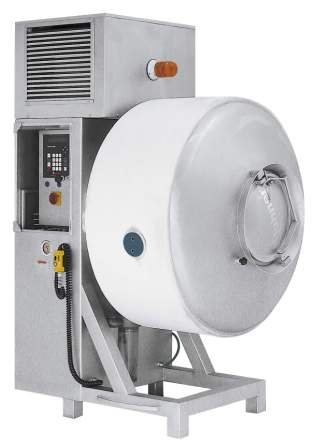In meat processing, tumbling and massaging are crucial steps, widely used in the production of products like Western-style hams, Chinese sausages, formed chicken nuggets, and baked items. The application of tumbling and massaging continues to expand, but several key concepts need to be discussed and clarified within the industry.
Key Questions:
1. What is the difference between tumbling and massaging?
2. What parameters should be controlled during meat tumbling and massaging?
3. Which is better: inclined tumblers (massagers) or horizontal models?
The Function and Principle of Tumbling and Massaging
In Western-style meat product processing, mechanical force is applied to the meat to tenderize it and extract proteins, thereby increasing the binding properties. This process helps the meat to absorb marinades quickly and evenly, improving water retention, tenderness, and yield. In some cases, tumblers are also used to coat products.
Clarifying Tumbling vs. Massaging:
The terms tumbler and massager are often used interchangeably in meat processing equipment. If you review product descriptions from tumbler manufacturers, you will find that both terms are typically combined. Even if some companies distinguish between tumblers and massagers, they are essentially the same in the context of meat processing, serving identical functions.
Structure Types of Tumblers/Massagers:
1. Horizontal Tumblers: These older models are durable, with a load capacity typically not exceeding 50% of the drum's volume.
2. Inclined Tumblers: These models are tilted during loading, tumbling, and unloading, with a higher capacity (often over 60%) and are typically used for larger machines with higher production volumes. Some models are tilted only during loading and unloading, but remain horizontal during tumbling.
3. V-shaped Guide Vanes: Regardless of the manufacturer, these guide vanes are typically V-shaped, with variations in angle and height to suit different products.
4. Mixing Augers: Some tumblers include augers to help mix the meat. While these models offer more mechanical action, they can be harder to clean.
5. Cooling Systems: To maintain optimal tumbling temperatures, some tumblers have cooling systems, either through jacketed designs or layered guide vanes.
Key Parameters for Tumbling/Massaging:
Different meats, such as beef (coarse fibers), pork (fine fibers, higher fat), poultry (fine, tender fibers), and seafood (small pieces), require varying tumbling parameters based on product characteristics and processing requirements. The following parameters must be controlled:
1. Tumbling Time: The time required depends on product specifications, meat characteristics, size, and subsequent processing needs. Tumbling time is typically calculated based on the meat's travel distance inside the drum.
2. Temperature: The best temperature for meat to absorb marinade, extract proteins, and prevent microbial growth is below 4°C. Tumbling machines in ambient-temperature environments should use refrigerant systems to maintain this.
3. Vacuum Pressure: While there's limited research, higher vacuum pressures are believed to improve protein extraction. The specific vacuum level (such as 95% or 0.5 bar) would depend on testing and process requirements.
4. Rest Time: Intermittent rest times are often set to allow meat to absorb marinade fully. This time is usually coordinated with tumbling periods, and the optimal duration will depend on product development.
Choosing the Right Size Tumbling Machine:
For high-volume production with a narrow range of products, a tumbler with a capacity of over 2000 liters is recommended. For smaller or more flexible production lines, tumblers with capacities under 2000 liters can be more practical.
Example: Suhner Swiss 700L Tumbling Machine with Refrigeration Function
This model features integrated refrigeration to maintain optimal tumbling temperatures and is a good reference for understanding industry-standard equipment used in high-quality meat processing
